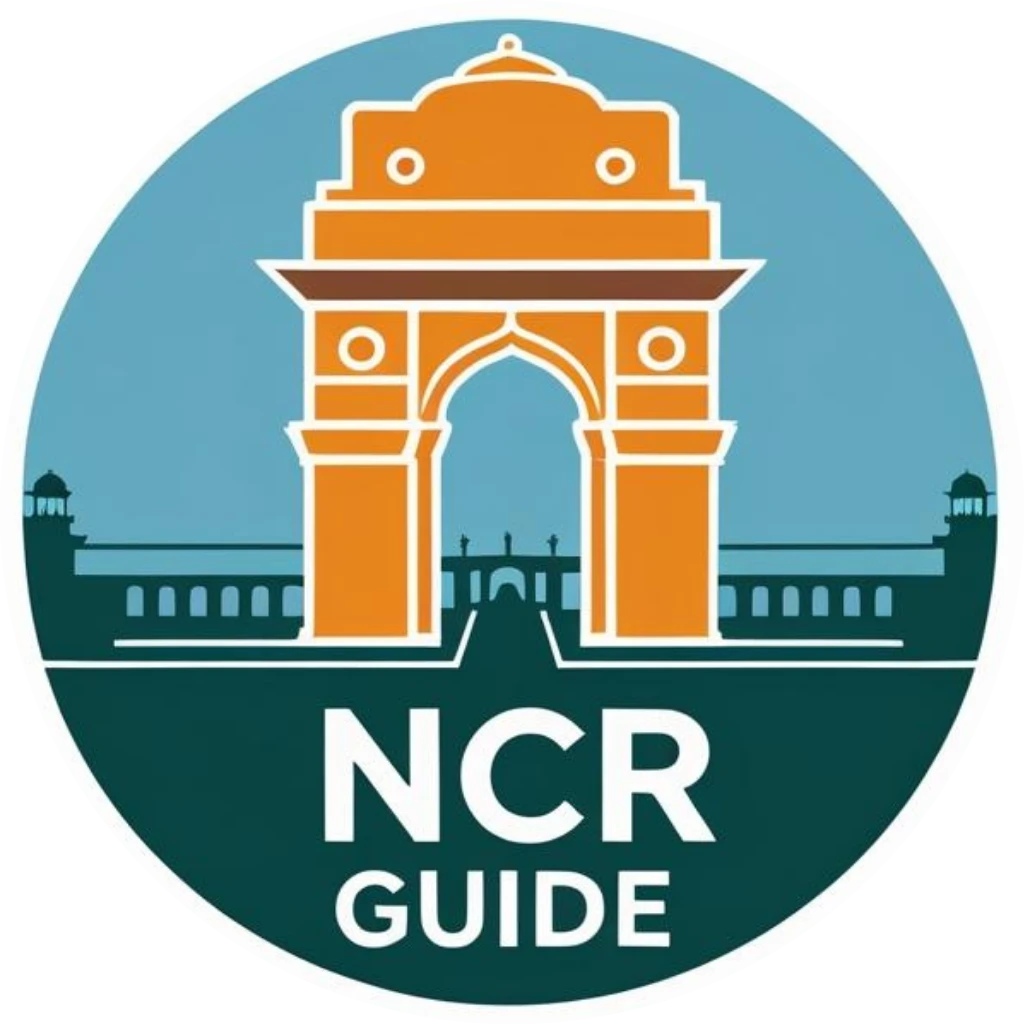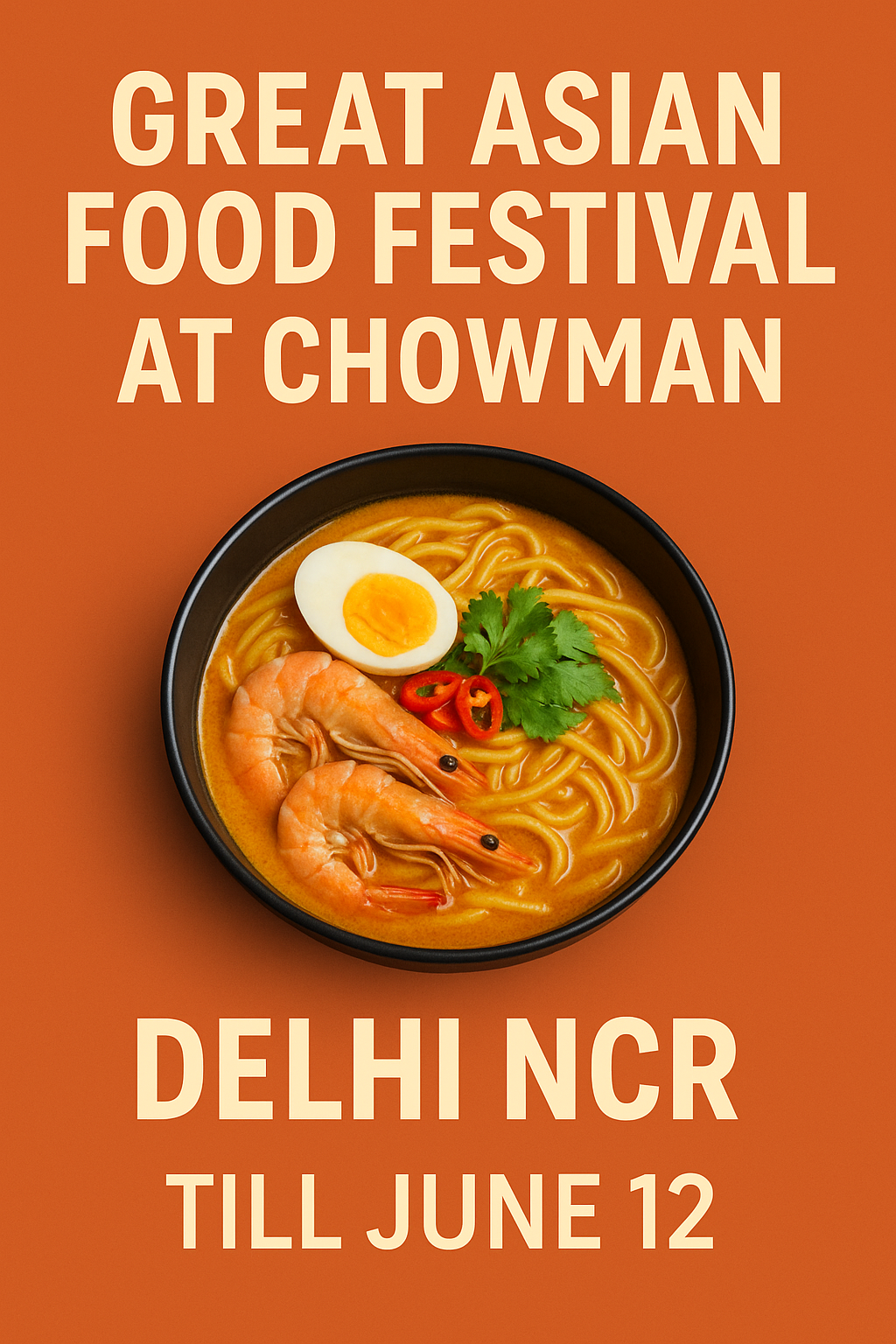Chowman’s Great Asian Food Festival is not just a menu extension. It’s a full-fledged, curated experience celebrating the restaurant’s 15-year milestone. Running through June 12, 2025, across select outlets in Delhi NCR, this festival brings together signature dishes from six Asian countries—Japan, Korea, Vietnam, Malaysia, Thailand, and China—under one roof. The effort is deeply rooted in Chowman’s goal to introduce Indian diners to the real taste of regional Asia, far removed from Indo-Chinese comfort fare.
Founder Debaditya Chaudhury, speaking on the festival’s launch, emphasized the culinary intent behind it:
“Each dish is a love letter to the region it comes from—whether it’s a broth we simmered for hours or a sauce balanced by tradition. This isn’t fusion; it’s fidelity.”
That statement sets the tone for what follows—an all-dine-in, multi-course gastronomic tour, served fresh from the wok, the grill, or the noodle pot, with no shortcuts and no reheats.
Where to Experience the Festival
The festival is available exclusively for dine-in between 12:00 PM and 10:30 PM daily at the following Chowman outlets in Delhi NCR:
- East of Kailash
- Gurugram (Sector 31)
- Noida (Sector 18)
- Indirapuram
The dine-in restriction is intentional, as many of the dishes, especially tempura, broths, and rice bowls, are meant to be consumed immediately to preserve flavor, texture, and temperature. This ensures the experience isn’t compromised by packaging or transit delays.
Region-by-Region Highlights with Pricing
The menu is structured to offer starter-main pairings from each country, but diners are free to create their own combinations. Here’s what’s cooking across the six regions, along with average pricing to help readers plan their visit.
From Japan, diners are welcomed with Pork & Mushroom Gyozas (₹280) and Seafood Tempura Moriwase (₹440), both of which deliver subtle umami in crisp, clean layers. For mains, Chicken Katsu (₹610) is the comfort champion—crispy outside, juicy within, and accompanied by steamed jasmine rice. The Yaki Udon noodles, available in vegetarian, chicken, and shrimp versions (₹390–₹495), have become a popular order for solo diners.
Known for balancing minimalism and umami, Japanese cuisine thrives on texture and presentation. Chicken Katsu, a fried cutlet typically served in school lunches and bento boxes, has become a national comfort dish across Japan—often paired with curry or shredded cabbage. The Yaki Udon at Chowman channels the open wok stalls of Osaka’s alleys, where thick noodles are flash-fried to preserve their bounce.
Korean dishes lean toward bold flavors. The Bibimbap (₹565) is a standout, with its runny yolk, pickled vegetables, and spiced protein served in a warm rice bowl. Kimchi Bokkeumbap, or kimchi fried rice (₹555–₹595), is punchy and ideal for spice lovers. Japchae glass noodles (₹335–₹385) offer a milder, soy-glazed counterpart and have been praised by diners for their balance of chew and sweetness.
Banchan culture in Korea emphasizes variety and balance—and Bibimbap, literally meaning “mixed rice,” reflects this ethos. The dish is seen as symbolic of harmony: warm rice topped with five-color vegetables, fermented spice, and protein in a single bowl. Kimchi Fried Rice (Bokkeumbap) carries the soulful kick of leftover meals turned into everyday staples.
Vietnamese cuisine brings freshness and subtlety. Goi Cuon (₹290), or cold prawn rolls, are crisp, minty, and perfect for a light starter. Ga Kho Gung (₹345), a caramelized ginger chicken dish, adds sweet heat to the plate. The Hanoi Pho Bowl (₹395–₹425), served with either chicken or beef, is a slow-cooked, star-anise-laced broth that’s authentic and restorative.
Pho, once a street-side breakfast tradition in Hanoi, is today recognized globally as Vietnam’s culinary symbol. The version served at Chowman retains the gentle anise and charred onion undertones of its traditional slow-cooked broth, creating a depth that appeals to both first-timers and purists. Goi Cuon, with its rice paper transparency, remains a Vietnamese favorite for cooling off in the country’s tropical heat.
Malaysia’s presence is both bold and rare. The Ayam Serai Glaze (₹325), with its fragrant lemongrass reduction, offers a zesty middle ground between Thai and Indonesian styles. The Laksa Lemak (₹535), a coconut curry noodle soup filled with prawns, tofu, and mushrooms, is creamy, spicy, and among the top-rated dishes at the festival.
Malaysian dishes are often a harmony of Malay, Chinese, and Indian influences. Laksa Lemak, in particular, is a coastal dish found in home kitchens, hawker stalls, and religious feasts alike. Its coconut base and fiery top layer of sambal represent a perfect yin-yang of warmth and comfort.
Thai options include Phad Bai Kra Prow (₹525), a spicy basil-infused meat stir-fry that’s intensely aromatic. Khao Phat Sapparot (₹595), a pork and pineapple fried rice, balances savory and sweet beautifully. Classic Thai curries—both red and green—are priced between ₹295 and ₹435, depending on the protein, and come with jasmine rice by default.
Known for its dynamic interplay of sweet, salty, spicy, and sour, Thai cuisine is deeply sensory. Khao Phat Sapparot (pineapple fried rice) is often served in the fruit itself in coastal Thai regions, while basil stir-fries like Phad Bai Kra Prow are found sizzling in Bangkok’s wok-lined streets at midnight food courts.
Chinese selections stick to pan-Asian familiarity with elevated finesse. The Asian Chili Garlic Prawns (₹465) are spicy and robust, while Moo Goo Gai Pan (₹355), a lesser-known but comforting dish of chicken and mushrooms in a light garlic sauce, offers a mellow break from the festival’s heavier flavors.
From dim sum to rustic stir-fries, Chinese cuisine balances simplicity with layered depth. Moo Goo Gai Pan, a Guangdong classic, is a dish of clarity—light soy, mushrooms, and snow peas stir-fried to keep crunch and flavor intact. Unlike the greasy caricature of “Chindian” food, Chowman’s version pulls closer to its Cantonese roots.
Ambience, Table Service, and Dining Experience
All participating Chowman outlets have made subtle upgrades to reflect the festival’s theme, though the transformation is more atmospheric than decorative. Music changes subtly by region, and staff are trained to guide first-time diners unfamiliar with Japanese or Vietnamese dishes. The goal is accessibility without over-explaining or exoticizing the food.
The service rhythm is timed to allow diners to explore the meal progressively. Courses are served in staggered succession, and servers are encouraged to recommend regional pairings—like a bowl of Japchae followed by Katsu, or spring rolls leading into Laksa.
It’s worth noting that the festival menu is available alongside Chowman’s regular menu, so guests who want to combine old favorites with festival exclusives can do so without hesitation.
“This isn’t just a tasting platter exercise,” said a senior chef at the Indirapuram outlet. “We designed it so you can travel region to region on one table. It’s not about gimmicks. It’s about fidelity.”
Servers are also briefed to guide guests through this journey, offering recommendations based on spice preference, first-time exposure, or interest in lesser-known dishes. Guests who engage with the staff often leave with a more rewarding, tailored meal—something rarely seen in high-volume chains.
A Dish Worth a Closer Look: The Laksa Lemak
Of all the menu stars, one dish that has quietly stolen the spotlight is the Malaysian Laksa Lemak. Rich, creamy, and generously portioned, this seafood-forward noodle soup combines prawns, tofu, mushrooms, and soft noodles with a coconut-milk broth spiced by galangal, lemongrass, and sambal. Chowman’s kitchen team reportedly took weeks to perfect the paste, with chef-led tasting rounds to preserve its regional integrity.
The lemongrass and turmeric used in this dish are imported in small batches to maintain freshness and flavor fidelity. Unlike lighter Thai soups, the Laksa is hearty, almost stew-like, and works as a full meal in itself. For many diners, it’s the most “unexpected favorite” of the festival.
Dining Strategy: How to Plan Your Visit
Given the diversity of offerings, the most rewarding way to experience the festival is to visit in pairs or groups. Two people can comfortably try at least four dishes without overspending or overordering, with a typical bill ranging from ₹1,400 to ₹1,800 for a two-person meal featuring starters and mains from different regions.
Solo diners will find the portion sizes generous but manageable, with combo options like Chicken Katsu and a side of Yaki Udon offering full satisfaction without overwhelming the palate.
Weekends have seen steady footfall, so weekday afternoon visits may offer a better opportunity to ask questions, linger, and try slower-cooked items like Pho or Bibimbap without the crowd.
Behind the Scenes: Craft, Not Gimmick
Unlike many commercial food fests, this one wasn’t outsourced or loosely planned. Chowman’s kitchen team, led by their in-house Asian chefs, spent over six months preparing the lineup. From sourcing lemongrass and Thai basil to adjusting broths for Delhi’s climate, every item was tested for flavor accuracy and regional integrity.
One sous chef at the East of Kailash outlet noted:
“We didn’t just borrow names—we followed original techniques. That’s why the tempura batter is light and airy, and why our Pho takes nearly eight hours to build.”
This commitment to detail is reflected in the textures, seasoning, and plating of each dish. Nothing feels rushed, and nothing tastes generalized.
Guests across social platforms have already started sharing their reactions. A user on Reddit Delhi wrote:
“Tried the Bibimbap and Pho last night. Didn’t expect the broth to be that complex. Reminded me of my trip to Hanoi.”
Another popular food blogger commented on Instagram:
“The gyozas were juicy, and the tempura was on point. Honestly didn’t think I’d find this level of finesse at a chain outlet.”
This grounds the experience in real-time feedback and builds trust for new diners still deciding if the visit is worth it.
FAQs
What is the Great Asian Food Festival at Chowman?
It’s a dine-in-only culinary event hosted by Chowman, featuring authentic dishes from Japan, Korea, Vietnam, Malaysia, Thailand, and China, running across Delhi NCR outlets until June 12, 2025.
Which Chowman outlets in Delhi NCR are offering the festival?
The festival is available at East of Kailash, Sector 31 Gurugram, Sector 18 Noida, and Indirapuram outlets.
Is the festival menu available for delivery or takeaway?
No. This is a dine-in exclusive to preserve dish quality and integrity.
What are the must-try dishes at the festival?
Popular favorites include Chicken Katsu, Yaki Udon, Bibimbap, Laksa Lemak, Hanoi Pho, Asian Chili Garlic Prawns, and Khao Phat Sapparot.
What is the average cost for a meal at the festival?
Meals typically cost ₹700–₹1,000 per person. A full meal for two with starters and mains ranges between ₹1,400 and ₹1,800.
Are there vegetarian options in the festival menu?
Yes. Dishes like Thai Curries, Japchae, Yaki Udon, and Pho have vegetarian versions.
Can I still order from the regular Chowman menu?
Yes. The festival specials are served alongside the regular à la carte menu.
Should I make a reservation in advance?
Reservations are recommended, especially on weekends, but not mandatory.

